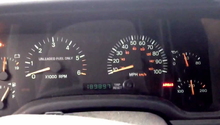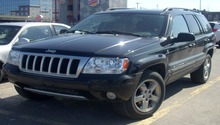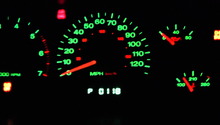Jeep Cherokee and Jeep Grand Cherokee 1984-2004: Warning Lights
In most cases, a warning light is a potential indication that something is wrong with your vehicle. From the engine to the fuel system to general maintenance, warning lights can indicate an array of problems. Some are more serious than others.
This article applies to the Jeep Cherokee and Jeep Grand Cherokee (1984-2004).
At some point during the time you own your vehicle, you're bound to see at least one warning light. It's important to familiarize yourself with the different types of warning lights, as this can help you figure out whether there's an immediate problem, such as a low level of engine oil or a problem with the braking system, or a less concerning issue such as low windshield washer fluid. It won't take long to go over the most crucial warning lights, but doing so will help you feel more at ease when the next one illuminates. Here's a guide to the various warning lights to watch for on your Jeep Cherokee or Jeep Grand Cherokee.
Warning Lights
Check Engine Light
The dreaded check engine light comes in many forms. For example, it might say "check engine" or "service engine soon." The problem could be anything from a fault that causes poor emissions to a serious problem requiring immediate attention, such as overheating. While a blinking or flashing check engine light means you should have the vehicle checked immediately, a steady light implies that you should get the vehicle checked out as soon as conveniently possible.
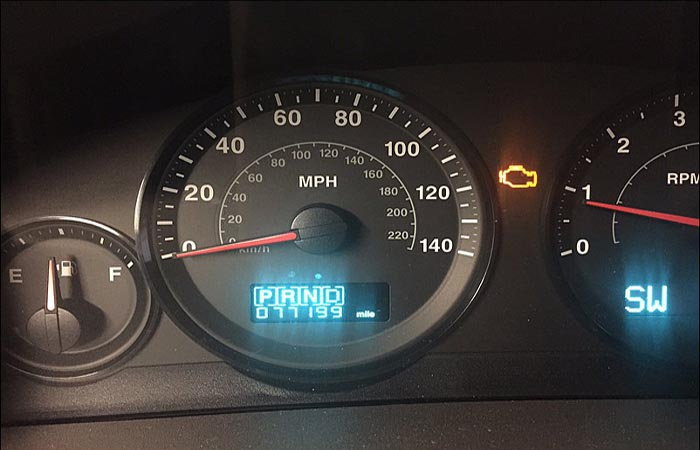
Washer Fluid Level Light
The windshield washer level light will illuminate to let you know that the washer fluid level is low. If this is the reason, refilling the container to the appropriate level should cause the light to turn off. However, some Jeep owners have noticed that the light illuminates even when the container is full. The most common cause in this instance is a faulty or stuck level sensor.

Brake Light
If you see your brake warning light illuminate, it may simply mean that you've left your parking brake engaged. However, if the light remains on even after you've released the parking brake (or if the parking brake was never on to begin with), there may be an issue such as a brake fluid leak or a loss of pressure in the braking system. It's crucial to uncover and resolve any potential issues with the braking system as soon as possible.
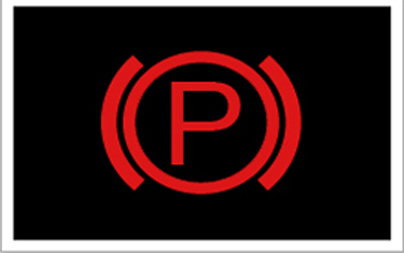
Shift Light
That yellow arrow seemingly pointing upwards, or advising you to go straight, is actually an (up)shift arrow. This arrow was used on older Jeep models to help promote fuel efficiency by telling the driver when to shift gears. Today, many Jeep owners prefer to disable the light by removing the corresponding bulb.
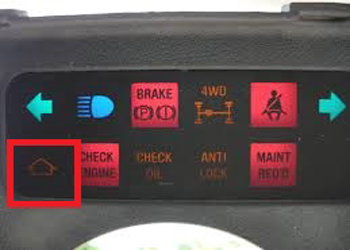
GEN Light
The GEN light is short for generator. As many owners guess when the light comes on, this could indicate a problem with the alternator or the charging system. The first and simplest step is to make sure that your battery and the related cables are working properly. If they are and the light continues to remain on, it could be time to replace the alternator.

Part-Time 4WD Light
Think of your Jeep's Part Time light as a 4WD indicator light. This light will come on whenever you are out of 2WD, such as 4HI or 4LO. It's normal for this light to come on, and it's a helpful reminder to shift out of 4WD when it's no longer necessary for extra traction and control. However, there is likely a problem within the traction control system if this light stays on when your Jeep is in 2WD.

Related Discussions and Site
- Check Engine Light - What Does it Mean? - Motorist.org
- What is This Warning Light? - CherokeeForum.com
- Washer Fluid Warning Light on Dash but Container is Full - CherokeeForum.com
- What Does the GEN on the Dash Mean? - CherokeeForum.com
- Part Time 4WD? - CherokeeForum.com


